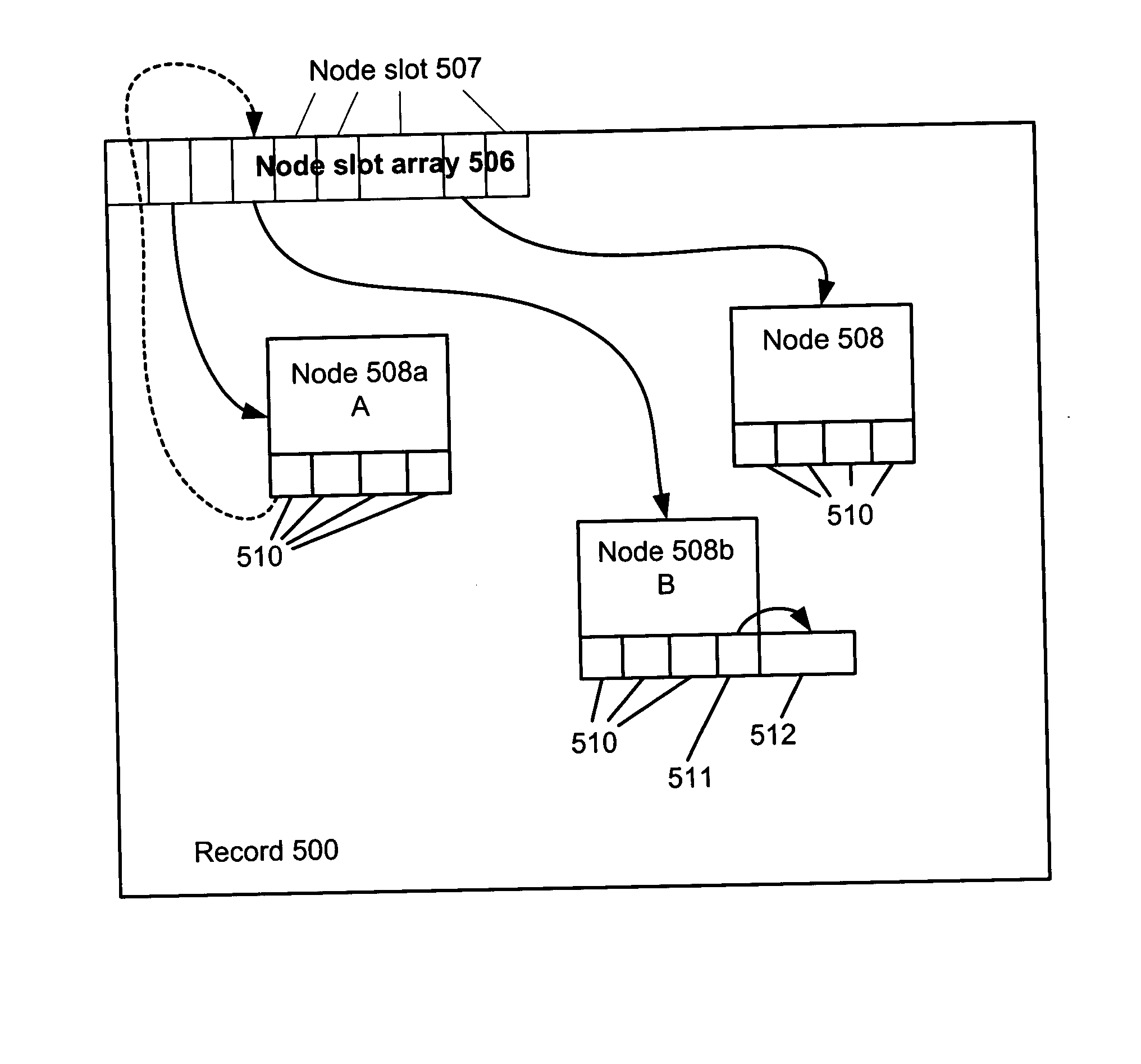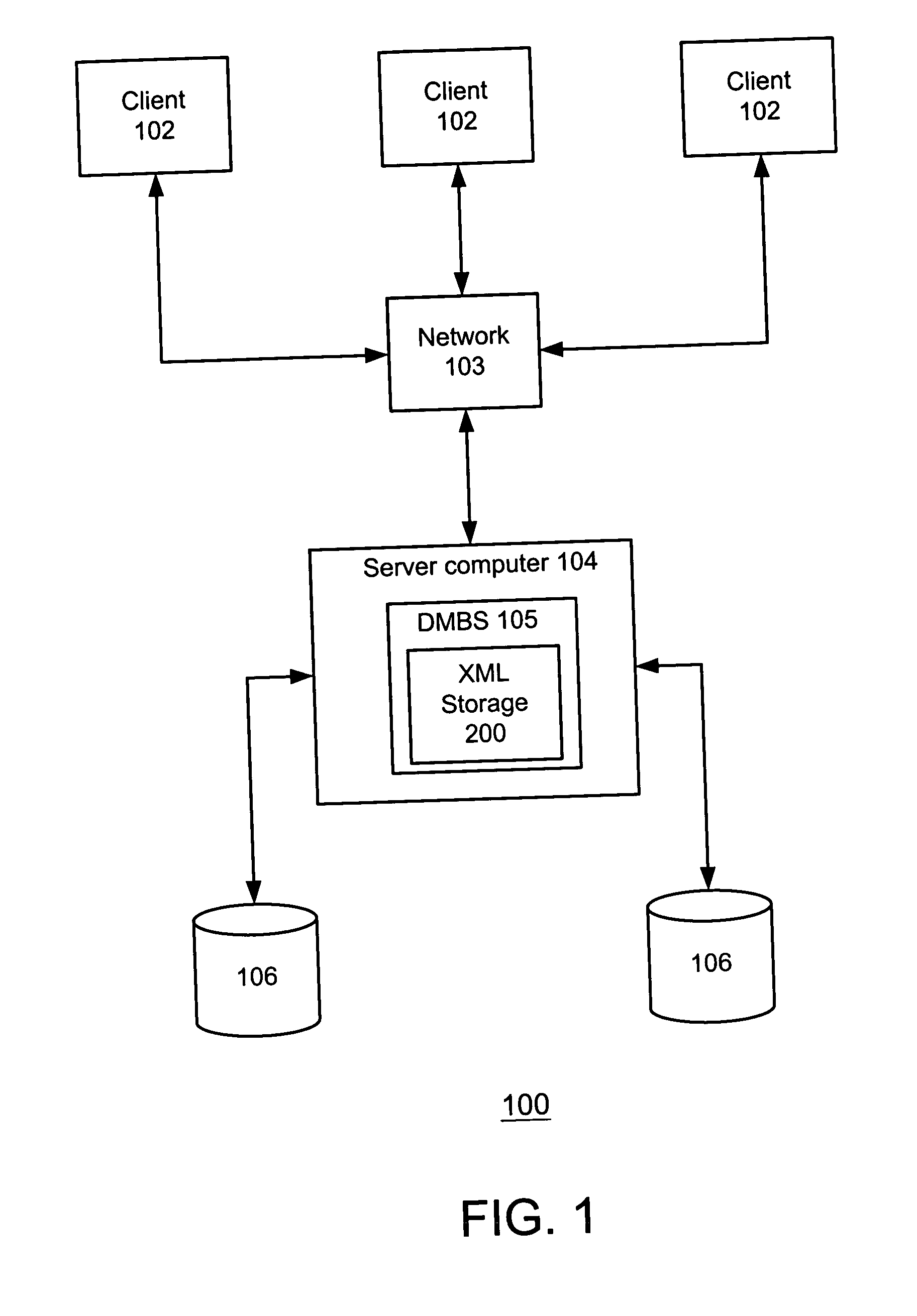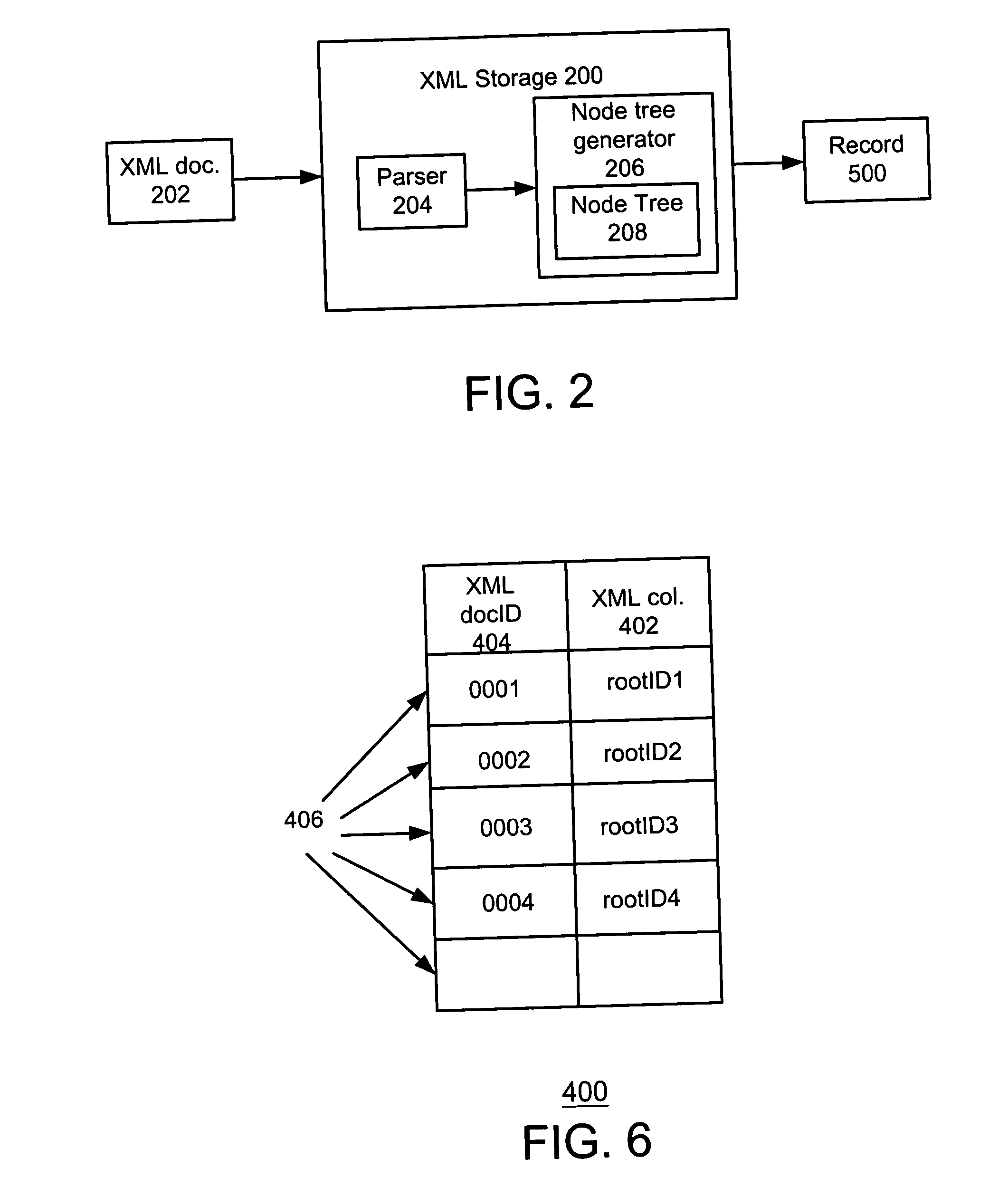Method and system for storing structured documents in their native format in a database
a database and structured document technology, applied in computing, instruments, electric digital data processing, etc., can solve the problems of inefficiency, burdening the mapping process, and both approaches have serious disadvantages, so as to preserve the structure and simplify the navigation up and down the tree
- Summary
- Abstract
- Description
- Claims
- Application Information
AI Technical Summary
Benefits of technology
Problems solved by technology
Method used
Image
Examples
Embodiment Construction
[0016] The present invention relates generally to computer implemented database systems and, more particularly, to an improved method and system for storing structured documents in their native format in a database system. The following description is presented to enable one of ordinary skill in the art to make and use the invention and is provided in the context of a patent application and its requirements. Various modifications to the preferred embodiment and the generic principles and features described herein will be readily apparent to those skilled in the art. For example, the following discussion is presented in the context of a DB2® database environment available from IBM® Corporation. It should be understood that the present invention is not limited to DB2 and may be implemented with other relational database systems or with other native XML database systems. Thus, the present invention is to be accorded the widest scope consistent with the principles and features described...
PUM
 Login to View More
Login to View More Abstract
Description
Claims
Application Information
 Login to View More
Login to View More - R&D
- Intellectual Property
- Life Sciences
- Materials
- Tech Scout
- Unparalleled Data Quality
- Higher Quality Content
- 60% Fewer Hallucinations
Browse by: Latest US Patents, China's latest patents, Technical Efficacy Thesaurus, Application Domain, Technology Topic, Popular Technical Reports.
© 2025 PatSnap. All rights reserved.Legal|Privacy policy|Modern Slavery Act Transparency Statement|Sitemap|About US| Contact US: help@patsnap.com



